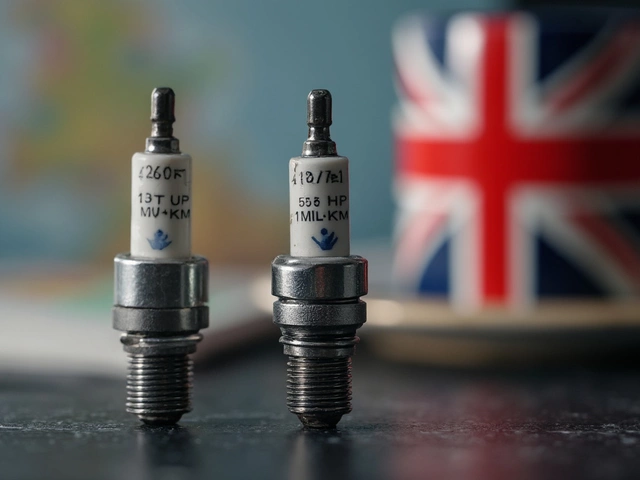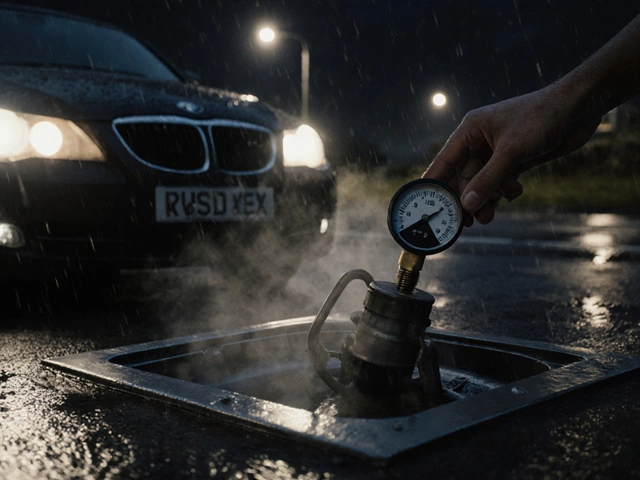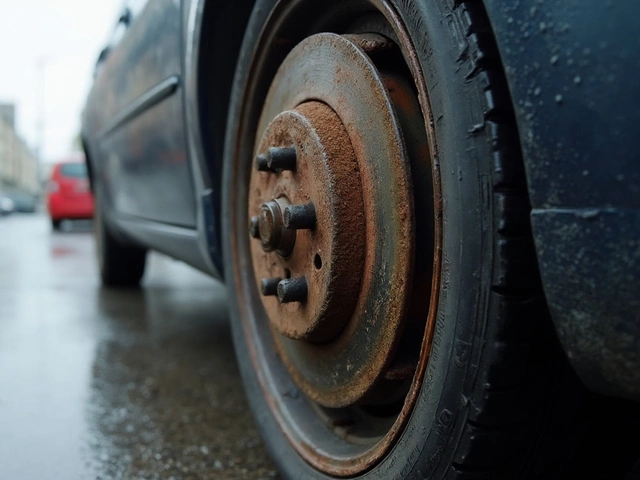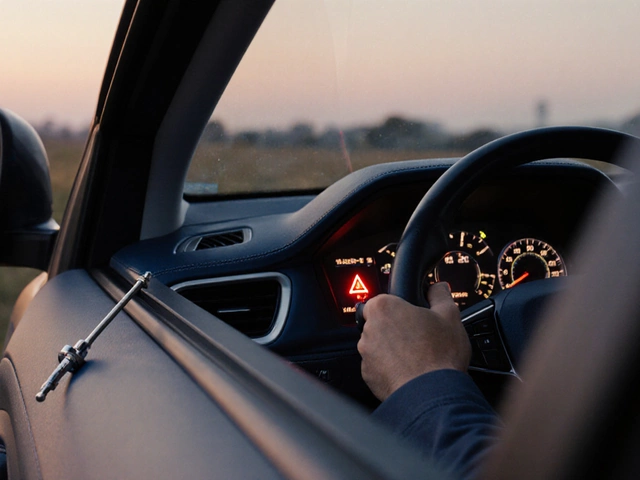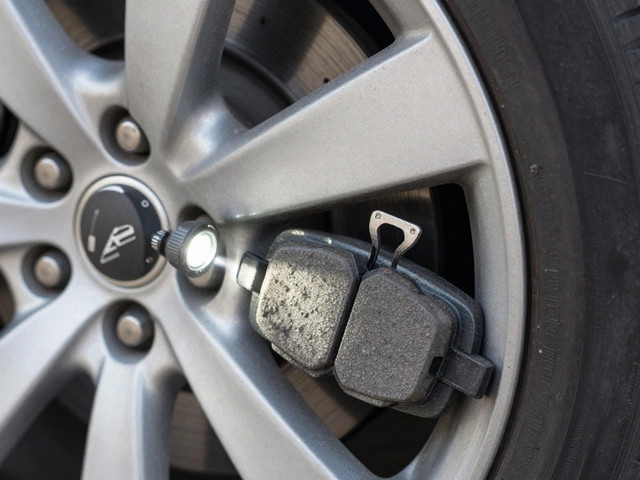Your brakes aren’t just another part—they’re the only thing keeping you from rolling through stop signs and into trouble. Most people wait far too long before swapping out their brake pads. Why? Half the time, it’s because they don’t know what to look for.
Let’s get one thing straight: your car usually tells you when the pads are on their last legs. Maybe it screeches or grinds, maybe it feels squishier than usual, or maybe the dash is giving you a warning light. Some newer pads even come with metal tabs that make a piercing sound when they're thin enough to need attention.
- Why Brake Pads Matter
- Common Warning Signs
- How to Check Brake Pads Yourself
- Strange Noises Explained
- What Happens If You Ignore Worn Pads
- Tips for Making Pads Last Longer
Why Brake Pads Matter
Think of brake pads as the backbone of your car’s stopping power. Every time you press the pedal, those pads clamp onto a spinning disc to slow you down—hard stops, quick red light taps, or crawling in traffic. Without them working right, nothing else about your brakes really matters.
Here’s a hard fact: Worn-out pads mean your car’s stopping distance gets longer. On average, a car with fresh pads can stop in about 120 feet from 60 mph. With thin or damaged pads, that number can spike over 200 feet. A hundred feet can be the difference between a close call and a crash.
That’s not just me talking—according to the National Highway Traffic Safety Administration (NHTSA), bad brakes are a factor in roughly 22% of all vehicle-related accidents involving mechanical failures.
Driving with shot pads also starts a chain reaction. Metal-on-metal contact chews up your rotors, leading to way bigger repair bills. Rotors can cost four or five times what fresh pads do. Skip the swap, and you’ll pay for it—literally.
Want a quick look at the basics?
| Healthy Brake Pads | Worn Brake Pads |
|---|---|
| Short, safe stopping distance | Much longer stopping distance |
| No scraping or grinding sounds | Noisy, metal-like screeches |
| Good pedal feel, steady response | Spongy or sinking pedal |
| Low-cost maintenance | Expensive rotor or caliper repairs |
At the end of the day, taking care of your brake pads is really about keeping you, your passengers, and everyone else on the road safe. It’s just basic common sense—and it saves you money over time too.
Common Warning Signs
You don’t need to be a mechanic to spot when your brake pads are toast. In fact, the hints are usually loud, obvious, and can even be felt through your steering wheel. Car makers have made these clues hard to miss on purpose.
- Squealing or Screeching Noises: That high-pitched sound the first time you hit the brakes in the morning? That’s normal, especially if it’s been damp overnight. But if the squeal sticks around even when the weather's dry, it’s the wear indicator tab on your pads scraping the rotor. Time for a swap soon.
- Grinding: When you hear a metal-on-metal grinding sound, the pad’s friction material is totally gone. Now the metal backing is digging into your rotor. Get these replaced right away or you’ll double your repair bill.
- Reduced Braking Power: Needing to push the pedal further or harder before stopping? Not normal. It might feel like your car just won’t stop as quick as before. That’s a big red flag.
- Vibrations: If you feel shakes or vibrations coming from the pedal when braking, your pads could be unevenly worn, or the rotor may be warped. Either way, it’s a sign your brakes need attention.
- Warning Light: Some cars will light up a brake warning light when pads are low. Check your dashboard—don’t just hope the light’s a fluke.
Mechanics see these indicators all the time. According to a recent AAA study, about 20% of vehicles brought in for service had brake issues, with worn pads being the top problem. That matches what people feel and hear every day.
| Sign | What You Might Notice | What To Do |
|---|---|---|
| Squealing | Sharp, high-pitch noise, especially when braking | Inspect pads soon |
| Grinding | Metal-on-metal sound | Replace pads immediately |
| Spongy Pedal | Pedal goes soft or sinks further than usual | Get a brake check |
| Vibrations | Shaking during braking | Check pads and rotors |
| Warning Light | Brake light on dash | Read your owner’s manual, get inspected |
Ignoring the signs won’t make them go away—they’ll just get louder and costlier. Once you spot even one, put a brake check on your weekend to-do list.
How to Check Brake Pads Yourself
You don’t need to be a seasoned mechanic or own a fancy toolbox to see if your brake pads are worn out. In fact, checking your brake pads is one of the easier things you can do at home to keep your car running safe and smooth. Here’s a quick way to do it even if you’ve never worked on your car before.
First off, park your car on a level surface and make sure the engine is off. Pop off a wheel or just peek through the spokes (most wheels have openings big enough to see the pads and rotor inside). You’re looking for that chunky pad pressed against the metal disc. Most new pads are about 10-12 mm thick, but anything under 3 mm means it’s time for a swap.
- Get a flashlight so you can actually see the pads clearly.
- Look for a little rectangular piece of friction material next to the shiny disc (that’s the rotor). The pad should look thick, not wafer-thin.
- Check both the inside and outside pad if you can—they sometimes wear unevenly.
- If you see deep grooves or cracks, or it’s down to almost nothing, that’s a red flag.
While you’re down there, look for any weird buildup (like oily gunk, rust flakes, or metal shavings). Greasy pads can mean a brake fluid leak—which is way more serious.
Here’s something experts actually say. According to Consumer Reports,
"You should check your brake pads at least twice a year—worn pads not only cut braking power, but can destroy rotors, racking up hundreds in extra repairs."
Don’t ignore the feel of your brakes either. If the pedal is mushy or goes lower than usual, it’s another sign your brake pads might be toast. Trust your senses—odd noises or longer stopping distances usually mean trouble’s brewing with your brakes.
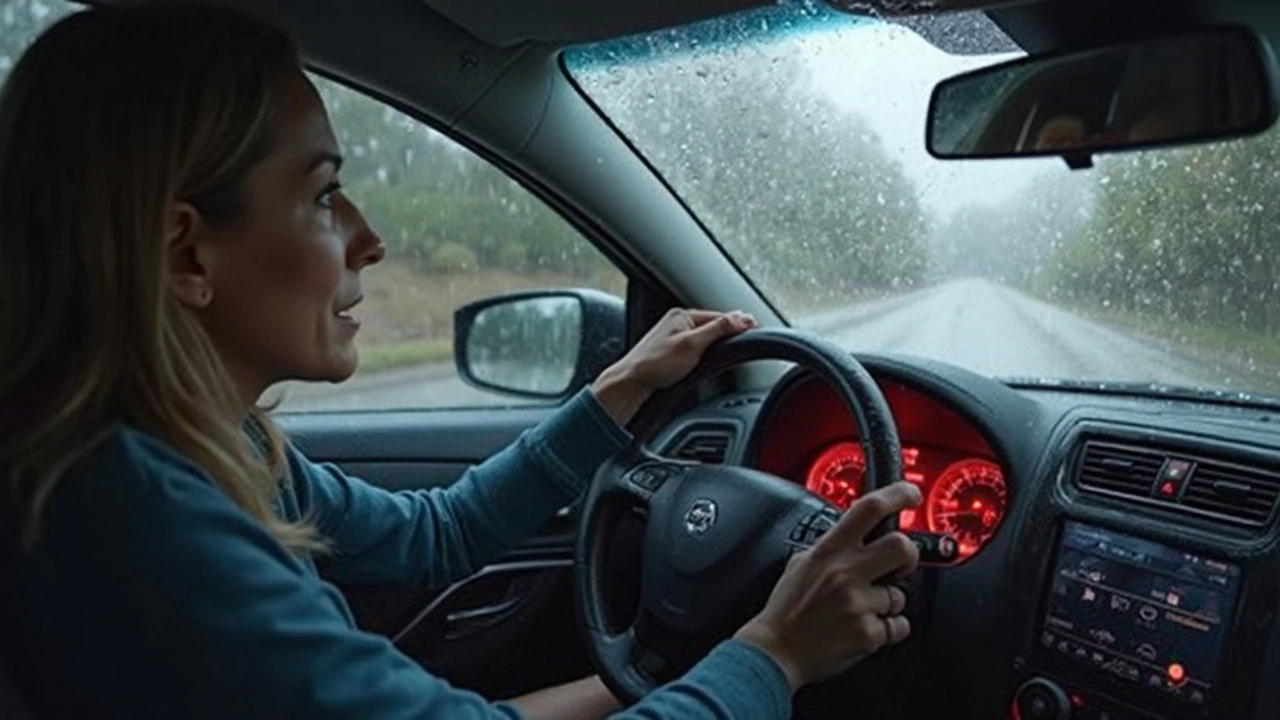
Strange Noises Explained
You don’t have to be a mechanic to notice when your brakes start making weird sounds. Here’s the lowdown: every noise is your car’s way of getting your attention. Those squeaks, squeals, and grinding sounds are like neon signs telling you something’s up with your brake pads.
Let’s break it down:
- Squeaking or Squealing: Most brake pads are made with little wear indicators, basically metal tabs that hit the rotor and make a high-pitched noise when the pads get too thin. If you hear a squeal that goes away when you press the brakes, your pads are probably due for a swap soon.
- Grinding: This is bad news. If you hear a grinding sound, chances are the pads are totally worn down and the metal backing is now scraping against your brake rotor. This can wreck the rotors, which means more money out of pocket.
- Clicking or Rattling: If you hear clicks or rattles, sometimes the pads are loose or a part like a spring or clip has come loose. This isn’t always dangerous right away, but you’ll want it checked out.
The folks over at Car and Driver put it best:
"If you notice a grinding or growling noise, schedule an inspection as soon as possible—the pads may be worn to the metal, which can lead to expensive rotor damage."
If you’re curious how common brake noise issues really are, check out this quick snapshot from consumer repair reports last year:
| Brake Noise Type | % of Reported Cases |
|---|---|
| Squealing/Squeaking | 49% |
| Grinding | 37% |
| Rattling/Clicking | 14% |
So, that squeak you’re ignoring? Turns out you’re not alone—but it’s your cue to check those pads before you’re stuck with a bigger bill.
What Happens If You Ignore Worn Pads
If you brush off worn brake pads, you’re basically asking for trouble. Your stopping power tanks, and next thing you know, you’re flooring the pedal and your car just keeps rolling. That’s a recipe for a crash.
Ignoring worn pads doesn’t just put you and everyone else on the road at risk—it can also torch your wallet. As brake pads wear out, the metal underneath starts grinding directly on your rotors. Rotors aren’t cheap. Replacing them, along with other damage, can multiply your repair bill by 2x or even 4x compared to a simple pad swap.
Here’s what really happens when you let it slide:
- Brake pads wear down to nothing, and the metal-on-metal contact shreds your rotors.
- Your stopping distance jumps up, sometimes by over 50%—not exactly what you want in an emergency.
- ABS and traction control can get messed up or completely stop working.
- You start hearing ugly grinding noises with every stop.
- Your car might pull left or right when you brake, making handling unpredictable.
Here’s a quick look at how costs stack up if you ignore the problem:
| Problem | Typical Cost to Fix |
|---|---|
| Brake Pad Replacement | $150–$300 (all wheels) |
| Worn Pads, Rotor Damage | $400–$800 (pads + rotors) |
| Further Damage (calipers, ABS, etc.) | $700–$2000+ |
If your brakes feel weak, you hear grinding, or your dashboard lights up, don’t put it off. The longer you wait, the worse and more expensive it gets. Ignoring worn pads isn’t just bad for your car—it’s genuinely risky for everyone riding with you.
Tips for Making Pads Last Longer
Brake pads might not be the most expensive thing on your car, but nobody likes getting them swapped early. The good news? How you drive matters way more than you might think. Simple habits can seriously stretch how long your brake pads last.
Hard, late braking eats pads fast. If you cruise up to lights or stop signs and slam the brakes every time, you’re burning through your pads way quicker than you need to be. Smooth, gradual stops are the trick. It's not just an old wives' tale—studies show gentle braking can double brake pad life.
"Smooth, moderate braking can extend pad life by up to 60%, especially for city drivers who often start and stop," says the Car Care Council, a trusted non-profit for driver safety.
Don’t ride your brakes going down hills, either. Shift into a lower gear before you start your descent, and let your engine help slow you down. This trick doesn’t just help with wear—it keeps your brakes from overheating and fading.
Here are some quick, practical ways to get the most from your pads:
- Leave more space between you and the car ahead. The extra time means you brake slower and softer—less wear, more safety.
- Lighten your load. Hauling extra junk in the trunk (or roof boxes, bike racks) means your brakes work harder.
- Flush your brake fluid regularly. Old, dirty fluid can make your calipers stick—forcing the pads to drag and wear out quickly.
- Check for stuck calipers or uneven rotor wear. If one wheel wears out way faster, something’s off and needs fixing.
- Listen for squeals or grinding and check your pads at every oil change, even if nothing feels wrong.
Just to give you an idea, here’s a look at how the average driver’s habits can impact brake pad lifespan:
| Driving Style | Typical Brake Pad Life (miles) |
|---|---|
| Gentle, mostly highway | 50,000 – 70,000 |
| Normal mixed driving | 30,000 – 50,000 |
| Aggressive, city traffic | 15,000 – 25,000 |
These aren’t just rough guesses—mechanics will tell you, city drivers who brake hard and often can chew through pads in half the time of someone who drives calmly. Small changes behind the wheel really pay off over time.


